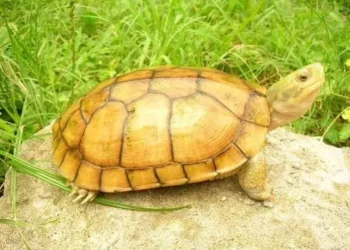Corn snakes (Pantherophis guttatus) are among the most popular pet snakes, appreciated for their manageable size, docile nature, and striking coloration. As a senior veterinarian, I often encounter questions from snake enthusiasts and pet owners regarding the safety and characteristics of their reptiles, including whether corn snakes possess venom. This article aims to provide a comprehensive and scientifically accurate answer to this question, exploring the anatomy, biology, and behavior of corn snakes in detail.
Introduction to Corn Snakes
Corn snakes are native to the southeastern United States and are part of the family Colubridae, which includes a wide range of non-venomous and mildly venomous snakes. They are known for their vibrant color patterns and relatively easy care requirements, making them a favorite among both novice and experienced herpetologists.
Physical Characteristics
Corn snakes typically grow to a length of 3.5 to 5 feet, although some individuals can exceed this range. They are characterized by their slender bodies, smooth scales, and a variety of color morphs, including orange, red, and yellow with distinctive black markings. Their patterns can vary widely, including stripes, blotches, and a combination of both.
Behavior and Habitat
Corn snakes are generally nocturnal and terrestrial but may also climb. In the wild, they are found in a range of habitats, including forests, grasslands, and abandoned buildings. They are adept at hiding and are often found in leaf litter or under logs.
Snake Venom: A General Overview
To understand whether corn snakes have venom, it is important to first grasp the basics of snake venom and its functions.
What is Snake Venom?
Snake venom is a specialized secretion produced by venom glands located in the upper jaw. It contains a complex mixture of proteins and enzymes designed to immobilize and digest prey. Venom can serve multiple functions, including:
Prey Immobilization: Venom helps to quickly subdue and immobilize prey, making it easier for the snake to capture and consume.
Digestive Aid: Some venom components aid in the digestion of prey by breaking down tissues and toxins.
Defense Mechanism: Venom can also serve as a defense mechanism against potential predators.
Types of Snake Venom
Venomous snakes are categorized based on the type of venom they produce, which can be broadly classified into several categories:
Neurotoxic: Affects the nervous system, leading to paralysis.
Hemotoxic: Affects blood and tissues, causing tissue damage and bleeding.
Cytotoxic: Causes damage to cells and tissues.
Different snake families and species produce varying types of venom, and the potency can vary widely.
Venom in Colubrid Snakes
Corn snakes belong to the family Colubridae, which is one of the largest snake families and includes a diverse range of species. While many colubrids are non-venomous, some possess mild venom that is not harmful to humans.
Venom in Colubrids
Colubrids can be divided into two groups based on their venomous capabilities:
Non-venomous Colubrids: Most colubrids fall into this category and do not produce venom that affects humans. They use constriction or other methods to subdue their prey.
Mildly Venomous Colubrids: Some colubrids have venom glands and produce venom that can be used to subdue prey. However, the venom of these snakes is usually not potent enough to cause significant harm to humans. Examples include the boomslang and the twig snake.
Corn Snakes and Venom
Corn snakes are part of the non-venomous group within the Colubridae family. They do not possess venom glands or produce venom that could affect humans. Their method of hunting and subduing prey involves constriction rather than venom.
See Also: How Intelligent Are Corn Snakes?
Myths and Misconceptions
Despite the scientific evidence supporting the non-venomous nature of corn snakes, myths and misconceptions persist. It is important to address these misconceptions to provide accurate information to snake enthusiasts and pet owners.
Common Myths
Myth 1: Corn Snakes Have Venom: Some individuals mistakenly believe that all snakes have venom. Corn snakes, as non-venomous colubrids, do not possess venom glands or produce venom.
Myth 2: Corn Snakes Can Inflict Dangerous Bites: While corn snakes can bite if threatened, their bites are not venomous and are generally harmless to humans. They may cause minor irritation or localized swelling but are not dangerous.
Clarifying Misconceptions
Understanding the biology of corn snakes and other colubrid species helps clarify these misconceptions. Education and accurate information are crucial for ensuring the safety and well-being of both snakes and their handlers.
Corn Snakes and Human Interaction
Corn snakes are popular pets due to their docile nature and ease of care. Their lack of venom makes them a safe choice for both novice and experienced snake enthusiasts.
Handling and Care
Handling: Corn snakes can be handled safely with proper care. They are generally calm and non-aggressive, making them suitable for interactive handling. It is important to handle them gently and avoid sudden movements to minimize stress.
Habitat: Providing a suitable habitat that mimics their natural environment is essential for their well-being. This includes appropriate temperature, humidity, and hiding spots.
Health Considerations
Bites and Scratches: While corn snake bites are not venomous, they can still cause minor injuries. It is important to clean any bites or scratches promptly to prevent infection.
Health Monitoring: Regular veterinary check-ups are essential for maintaining the health of your corn snake. This includes monitoring for common health issues such as mites, respiratory infections, and shedding problems.
Conclusion
Corn snakes (Pantherophis guttatus) are non-venomous snakes that do not possess venom glands or produce venom. As members of the Colubridae family, corn snakes rely on constriction rather than venom to subdue their prey. Understanding the biology and behavior of corn snakes helps dispel myths and misconceptions about their venomous nature.
Their docile temperament, combined with their lack of venom, makes corn snakes an excellent choice for reptile enthusiasts and pet owners. Proper care and handling are crucial for ensuring their health and well-being. Regular veterinary check-ups and accurate information about their needs will help you provide the best care for your corn snake.
If you have any concerns or questions about your corn snake’s health or behavior, consulting with a veterinarian experienced in herpetology is always a good practice. With the right care and knowledge, corn snakes can thrive as captivating and safe companions.
Related Topics:


























